RayStation’s brachytherapy planning module* provides a modern, flexible, and highly automated solution that integrates seamlessly with external beam workflows.
Its vendor-agnostic design, advanced Monte Carlo capabilities, robust scripting, and continuous development set it apart from other systems, empowering clinics to deliver personalized, high-precision brachytherapy treatments across a wide range of cancers.
*Subject for regulatory clearance in some markets.
Brachytherapy
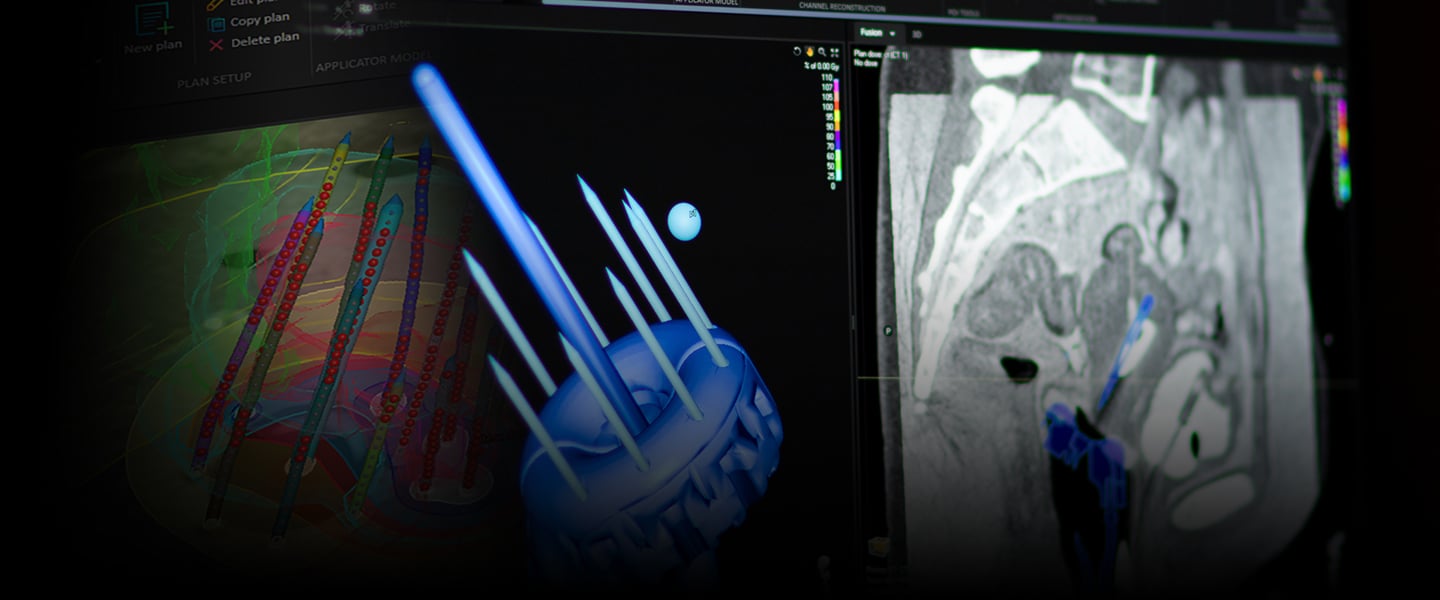
Why choose RayStation for Brachytherapy planning?
Its designed for the future.
Ready today.
- Precision without compromise
Unparalleled dose accuracy using TG-43 and advanced Monte Carlo (TG-186) computations, supporting the most complex anatomies and heterogeneous tissues. - Unified, integrated workflows
Plan and evaluate brachytherapy alongside external beam in a single system. Use EQD2 for cumulative dose assessments — no workarounds, no compromise. - Freedom through vendor neutrality
Support to export of plans to all major applicators and afterloader vendors, without locking clinics into a single hardware ecosystem. - Automation at every step
Deep Python scripting, automatic applicator reconstruction, and robust template workflows reduce manual work and free time for patient-centered care. - Adapted for all clinics
From large academic hospitals to focused, smaller clinics — powerful advanced tools and streamlined, easy-to-use workflows meet every need.
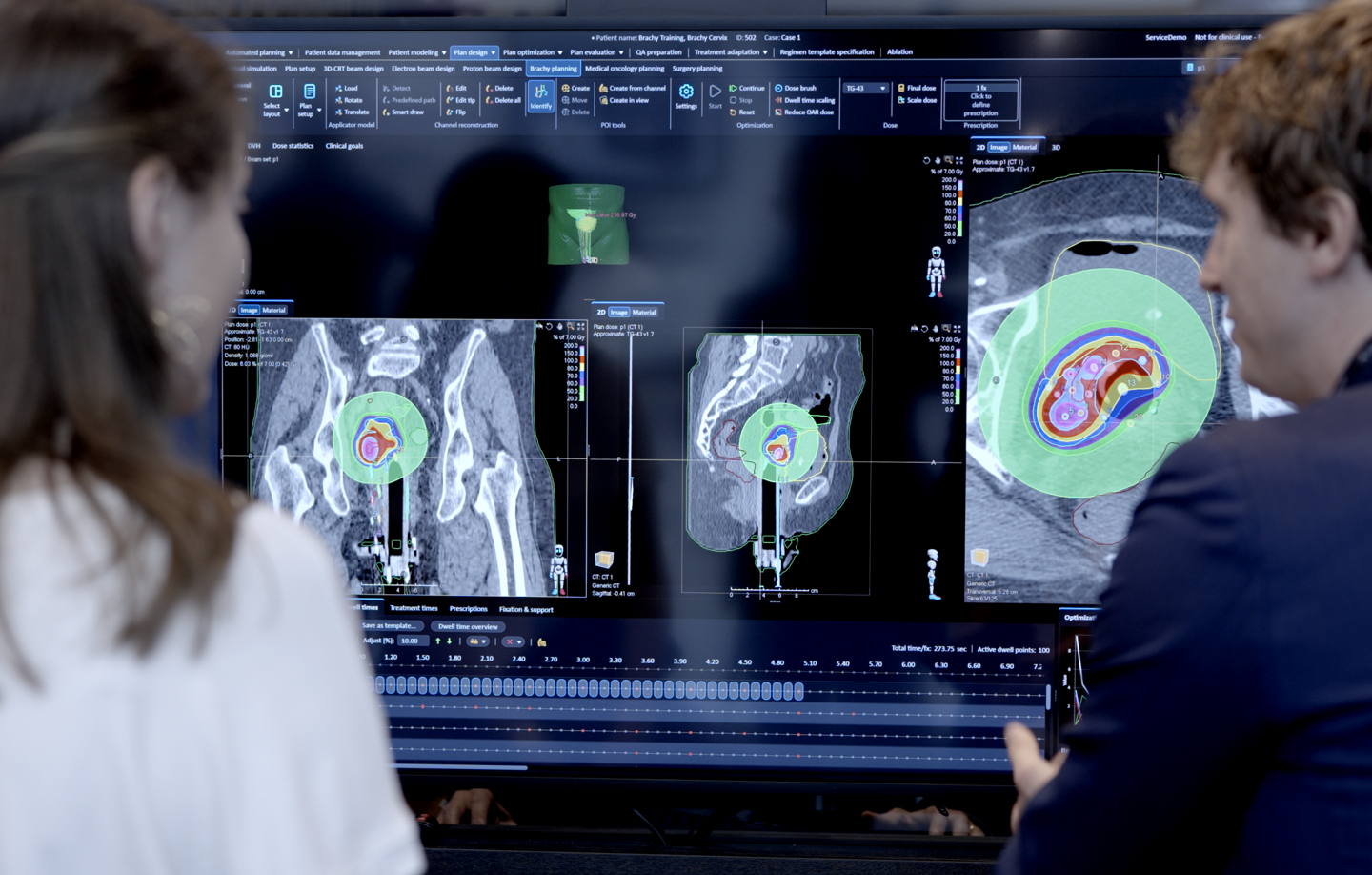
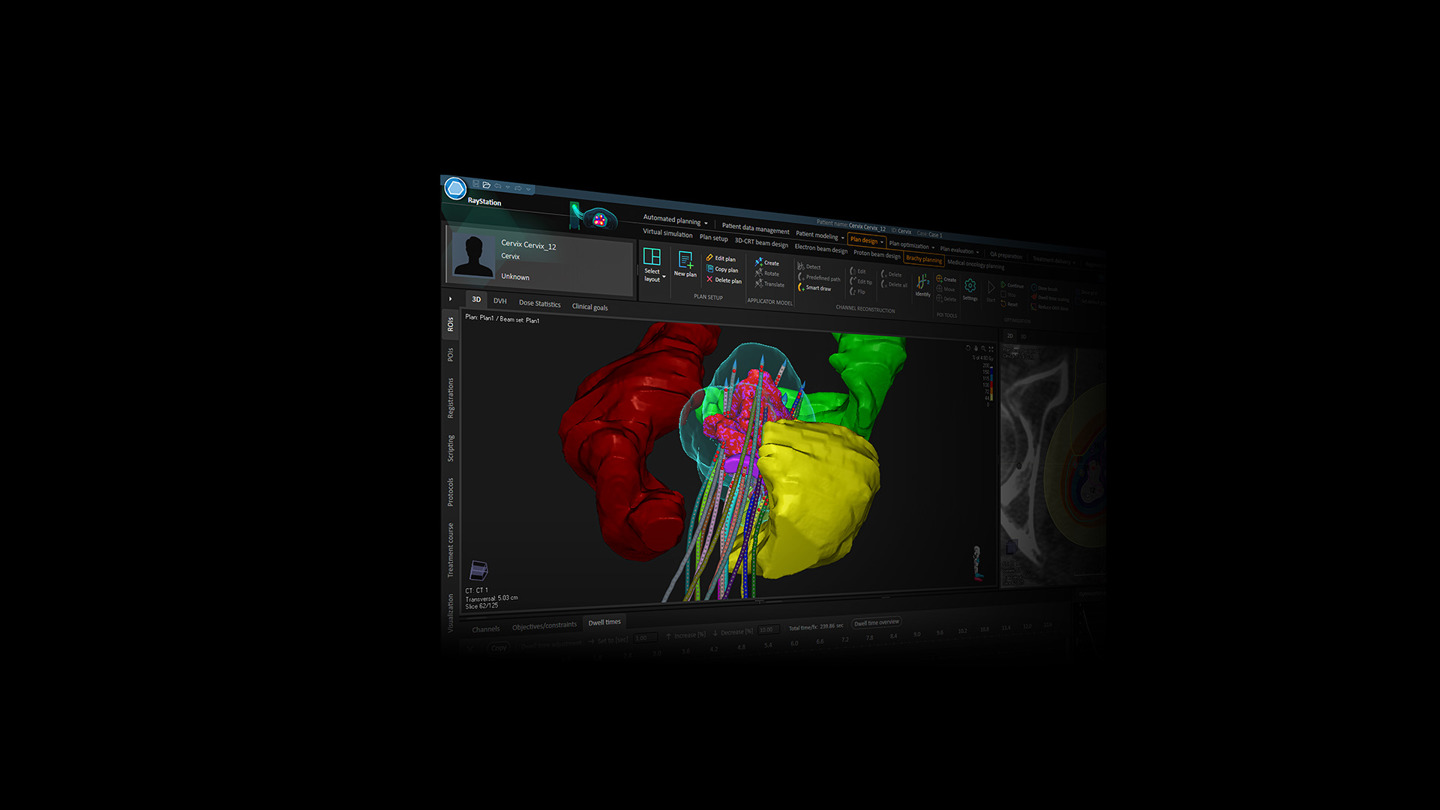
BUILT FOR THE MOST ADVANCED BRACHYTHERAPY PLANNING
- Imaging support: Planning can be done on CT or MRI. Automatic needle and channel reconstruction on CT is included.
- Dose computation: Supports TG-43 formalism and advanced Monte Carlo dose computation (TG-186), providing higher accuracy, especially
in heterogeneous tissue scenarios. - Optimization tools: Includes dwell time optimization (both POI-based and ROI-based), graphical dose editing ("Dose Brush"), and point-based optimization for cases like vaginal cylinder treatments.
- EQD2 calculation: Allows dose conversions and evaluation in terms of equivalent dose in 2 Gy fractions, facilitating combined treatments with external beam therapy.
- Automation and scripting: Almost all planning steps can be automated using Python scripting, including template-based workflows and inverse planning.
- Vendor flexibility: Plans can be exported to various afterloader systems making it flexible for clinics using different hardware.
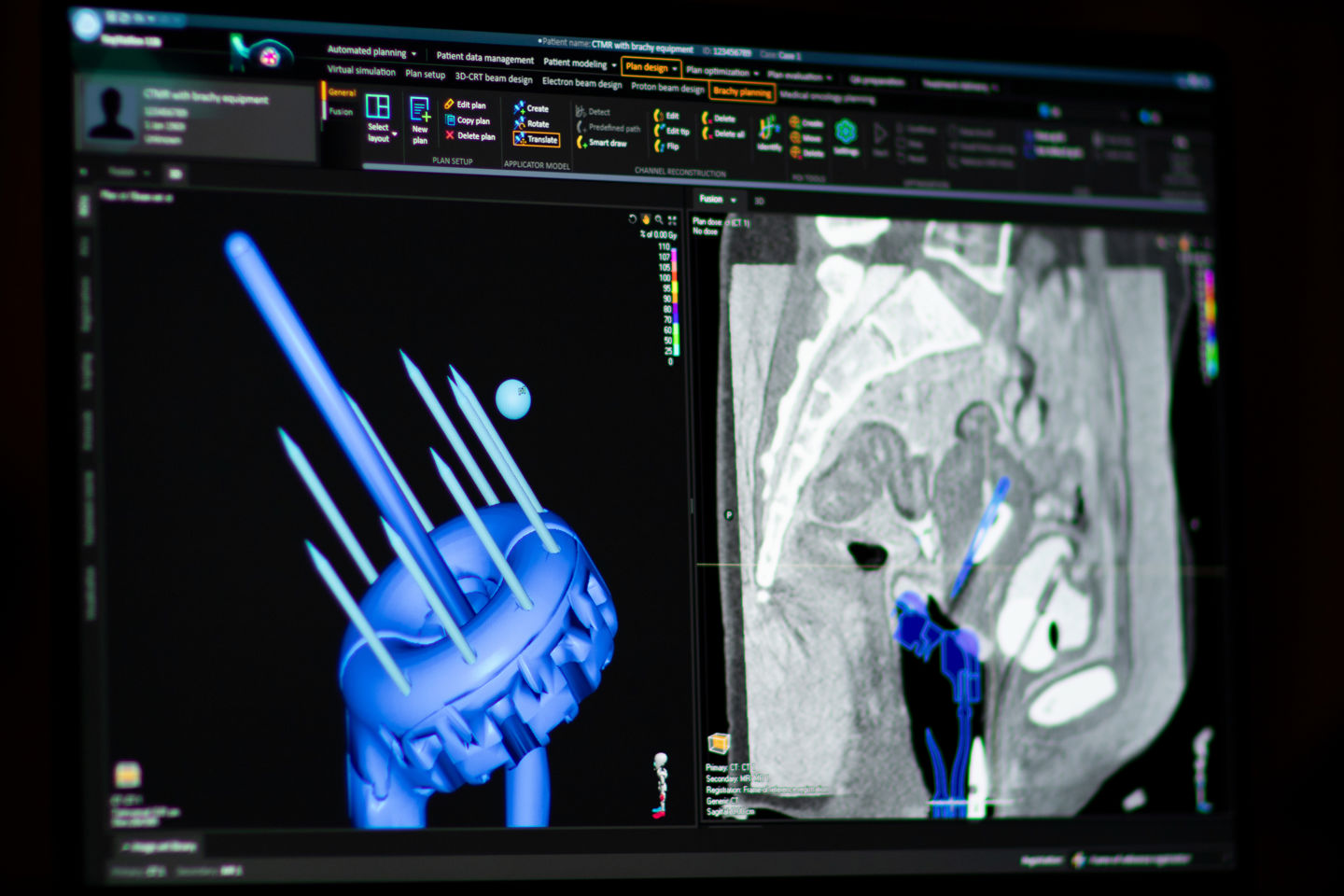
- Robustness modeling: Ongoing development of robust optimization that explicitly accounts for organ motion and needle displacement, in collaboration with Vienna General Hospital (AKH) and Linköping University Hospital.
- Graphical dose editing: The Dose Brush tool enables fine-tuning of dwell times interactively, allowing for both automatic and manual optimization modes.
- Efficiency & workflow integration: Combine external beam and brachytherapy planning in a single system, reducing the need for multiple software platforms.
- Higher accuracy & safety: Use of Monte Carlo dose calculation improves accuracy, especially in complex anatomies.
- Comprehensive dose evaluation: Ability to perform EQD2 dose summation and evaluation across treatment modalities for precise cumulative
dose management. - Future-ready development: Active development focusing on automation, inverse planning improvements, and robustness ensures that
clinics stay at the forefront of brachytherapy.
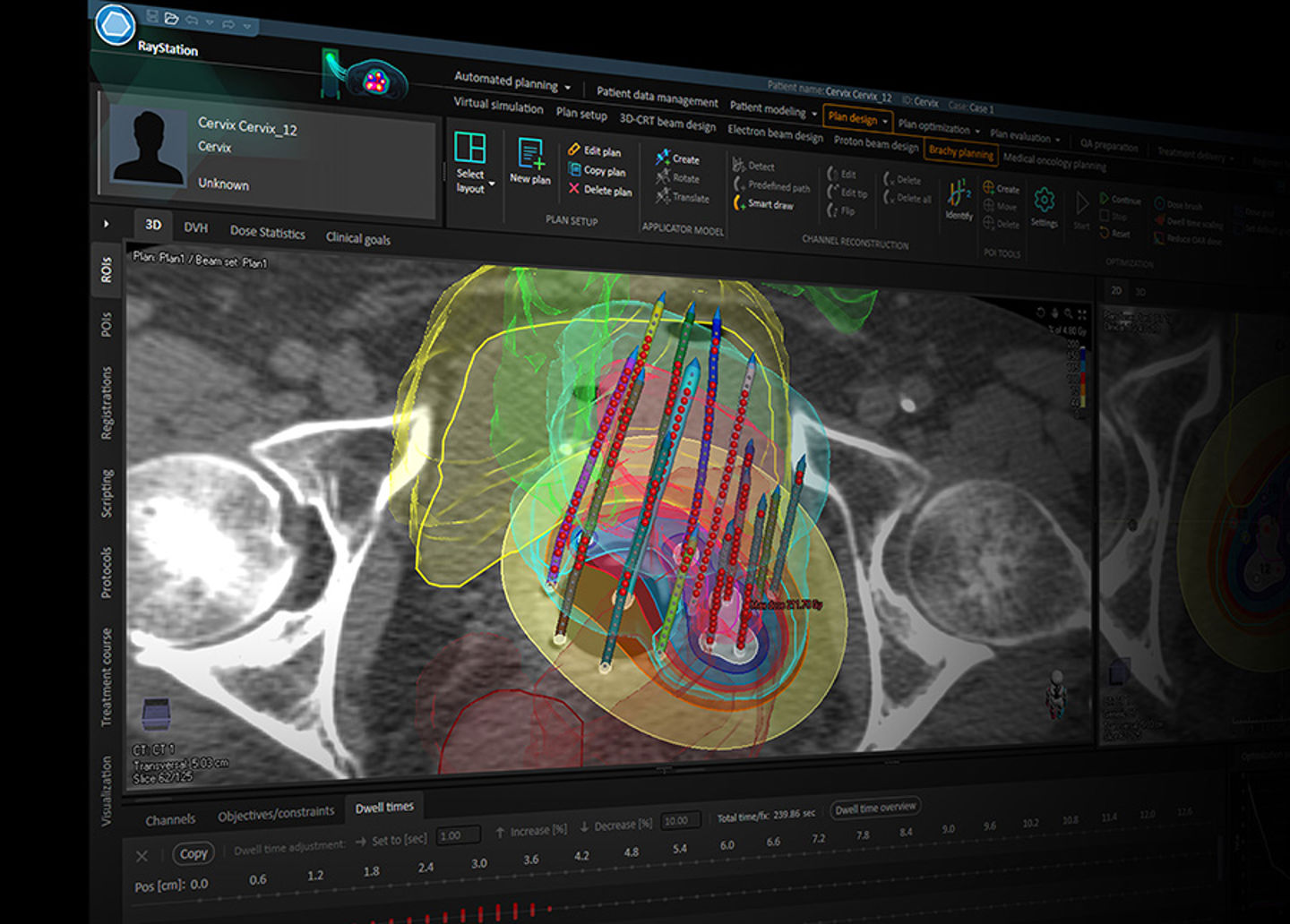
Ready for tomorrow’s brachytherapy
Webinar Recording: Advancing Brachytherapy Planning in RayStation
In the ESTRO webinar, Tom Niessen, Technical Lead for Brachytherapy and Interventional Oncology at RaySearch, presented RayStation’s fully developed brachytherapy module, emphasizing vendor-agnostic support, Monte Carlo dose calculation, EQD2 summation, and advanced automation tools. He highlighted future plans for deep learning-based segmentation and robust optimization.
Dr. Stefan Ecker, Postdoctoral Researcher at the Medical University of Vienna (AKH), then discussed their joint research on robust evaluation of brachytherapy plans using simulated organ motion, aiming to improve plan safety and reliability. Together, they outlined a vision to modernize brachytherapy planning through automation and precision.